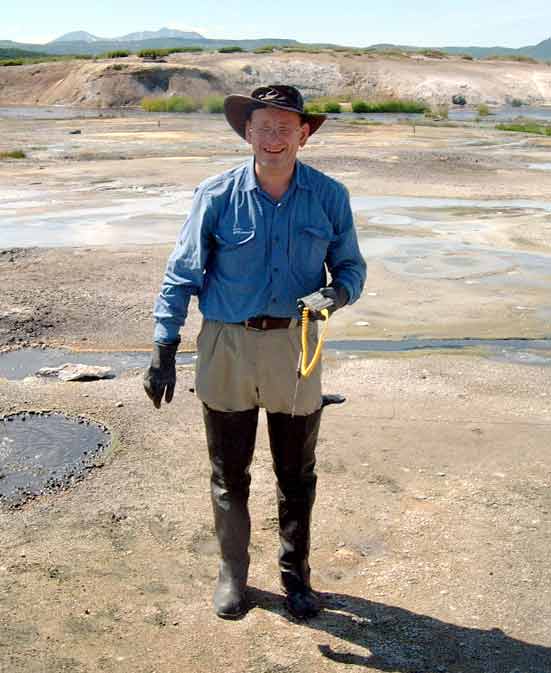This is an interesting discussion of Muslims leaving Islam, following a prediction of Daniel Pipes that the Iranians may leave Islam if they reject the theocracy now ruling Iran. Al Qeada may be the catalyst for much of this as they show the dark side of the religion. Interesting times.
Archive for April, 2008
The conversion of Muslims to Christianity
Thursday, April 3rd, 2008Obama vs Clinton
Thursday, April 3rd, 2008Michael Barone, the dean of political analysts, has a thorough analysis of the Democratic primary, which sounds astute to me. Everyone should read it.
The Third Kingdom
Tuesday, April 1st, 2008I’m reading a book about Archaea and the discovery of these organisms. One of the first great characters to appear is Karl Stetter, professor of biology at Regensburg and expert on extremeophiles. He is also an entrepreneur who developed a new “organic” form of sauerkraut using the L-form of lactobacillus which makes better tasting sauerkraut. I don’t know how organic the stuff is if the fermenting organism was modified but we won’t go into that here.
Stetter has been studying thermophiles or organisms that live at high temperatures for many years. He provided important help to Karl Woese when the American microbiology community rejected the Archaea concept in the 1970s. Germany became the great center of this research and he was one of the first to be able to culture organisms that live only at high temperatures and in extreme environments. Botany is a hobby and he also raises rare orchids. A book about thermphiles gives a taste of the enthusiasm that these exotic life forms stimulate.

Here, Stetter stands with some of his collecting apparatus in the Kamchatka Penninsula on a field trip. He enjoys poking around in boiling hot springs that would boil him alive if he were to fall in. A couple of times, he has come close. His newest work is on the tiniest member of the Kingdom he has discovered so far, Nanoarcheota, a tiny parasitic or symbiotic organism that is an excellent candidate for interplanetary travel at some point in evolution. These organsms are strict anerobes, will tolerate one hour of autoclaving, live at temperatures about 100 degree centigrade and require extreme acidity in some cases with a pH as low as 2. They will also tolerate temperatures as low as 140 degree below zero.

Another pioneer in this research is Morris Kates, of the University of Ottawa, whose study of the lipids in these organisms showed that they were not bacteria.
The highlight of my scientific career, from a professional point of view, was the discovery that membrane lipids of
halophiles (bacteria living in environments of high salt concentration), methanogens (anaerobic autotrophs that obtain energy
from the synthesis of methane gas), and thermoacidophiles (bacteria growing at high temperature and low pH) have struc-
tures different from all other organisms and are synthesized through a very unusual and unexpected pathway. Our findings
provided an important clue that was used by Carl Woese in proposing the existence of a third class of organisms called
Archaea, to which the extreme halophiles and methanogens belong. A survey of lipids from many species of extreme
halophiles showed there was a good correlation between the lipid structures and the genus of the species and made it possible to classify these species taxonomically on a generic level.
Yellowstone National Park is one prime collecting site for exotic organisms that live in extreme environments.
Another is the wreck of the Titanic 1200 feet below the surface of the ocean. The “rusticles” described by Ballard, and named because he thought they were made up of rust and looked like icicles or stalactites, are actually huge colonies of organisms metabolizing the iron in the hull of the ship and making oxygen. The water around Titanic should be an anerobic zone but oxygen is increasing and drawing more species to the site. The rusticles even have a sort of multicelled structure. The organisms and structure have been studied and classified by scientists who are interested in these iron metabolizng creatures that also inhabit water wells and plug them up with rusticles.
In the water well industry, it is now acknowledged that the bulk of the plugging and clogging events that occur down a well are actually biologically derived. Comparable studies have revealed that it is the same groups of bacteria that are involved in these events both down in water wells and deep down at the site of the RMS Titanic. Similar rusticle structures are observed at both sites. The question therefore becomes whether steel fabricated ships floating on the surface, or the RMS Titanic, a splintered steel structure lying on the ocean’s floor, are subject to the same bacterial challenges as water wells, which involve steel structures set into the ground water.
More to come.